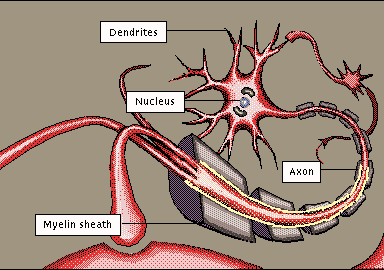
|
advertisement |

|
|
tell a friend!
software reviews bestseller list price survey what's new product support search educational tools ask a scientist math worksheets vocabulary builders hangman iPhone/iPad apps logic games brain food educational insights feature articles marketplace iPhone/iPad apps reading corner movie corner SuperKids home about SuperKids advertise! humor links help * * * Promotions * * * |
home > > >
feature articles > > >
learning windows
Learning Windows and the Child's BrainMany of you may have heard about "learning windows"--they seem to be the new hype in children's development. For those of you who haven't, don't worry. It's a relatively new concept, and it hasn't received much attention outside of scientific circles. But it has significant implications for your child's education, and what you can do to help. During a child's development, there are a This is what developmental windows are all about. But how do we know about them? How do these windows occur? What implications do they have for your child;and if you child misses as crucial window, can she still make up this lost opportunity? These questions and many others are currently under the scrutiny of neurobiological research. Research in neurobiology is a relatively new field, mostly due to the difficulties encountered when trying to analyze a brain's function. You can't very well slice a person's head open, poke around, and expect to observe normal brain function (not to mention the ethics of this). However, with the development of new medical imaging technology and more delicate tools, the research on neurological function has made some huge leaps. Although many unknowns still exist, we now know enough to draw some important conclusions on how learning works, especially in children. In order to understand learning in children, we first need to have a little biology lesson. In a brain, there are millions of neurons, which form the electrical connections that let us think. These cells send their signals through axons, some of which can reach a length of up to a meter in humans. Neurons, however, are not the only cells, or even the most important ones, in the brain.

This myelinization is extremely important in kids, because as newborn infants, we have very few myelinated axons. This helps Of course, there are other factors that contribute to learning windows. Early in life, many neurons are not very specialized as to what exactly they will have control over. Take the motor cortex. Early in life, these neurons which control movement are only generally organized, and each neuron has multiple connections to different muscles. Your experiences until the age of 10 determine how much of your cortex will be devoted to each part of your body. If you use your hands a lot, say in drawing, then more neurons will be devoted to the muscles of your hands and fingers, while less will be designated for the rest of your body. The more a muscle is used, the more connections will be stabilized. However, the less a muscle is used, the more the connections will die off. We're agreed now that developmental windows are important, so how do we make use of them? You see, these windows are only effective If you don't catch an all-important learning window, does that mean that you can just give up hope that your child will ever be a world-famous musician or physicist? Not necessarily. Remember, most of these windows just make it easier for a child to learn a certain ability. If you miss a window, it doesn't mean that your kids can't learn a new skill, it just means that it will take more effort on yours and your child's part. For example, the window for learning fine motor skills ends around the age of 10. If you learn a musical instrument before that, you will be much more proficient with less practice, and the skill will stay with you more easily later in life. However, if you wait to learn until after 10 years of age, you can still be an excellent player, it will just take more work to improve and maintain yourskills. In future columns, we will provide more specifics on when your child will have these learning windows, and on what you can do to take advantage of them.
Questions or comments regarding this site? webmaster@superkids.com Copyright © 1998-2024 Knowledge Share LLC. All rights reserved. Privacy Policy |